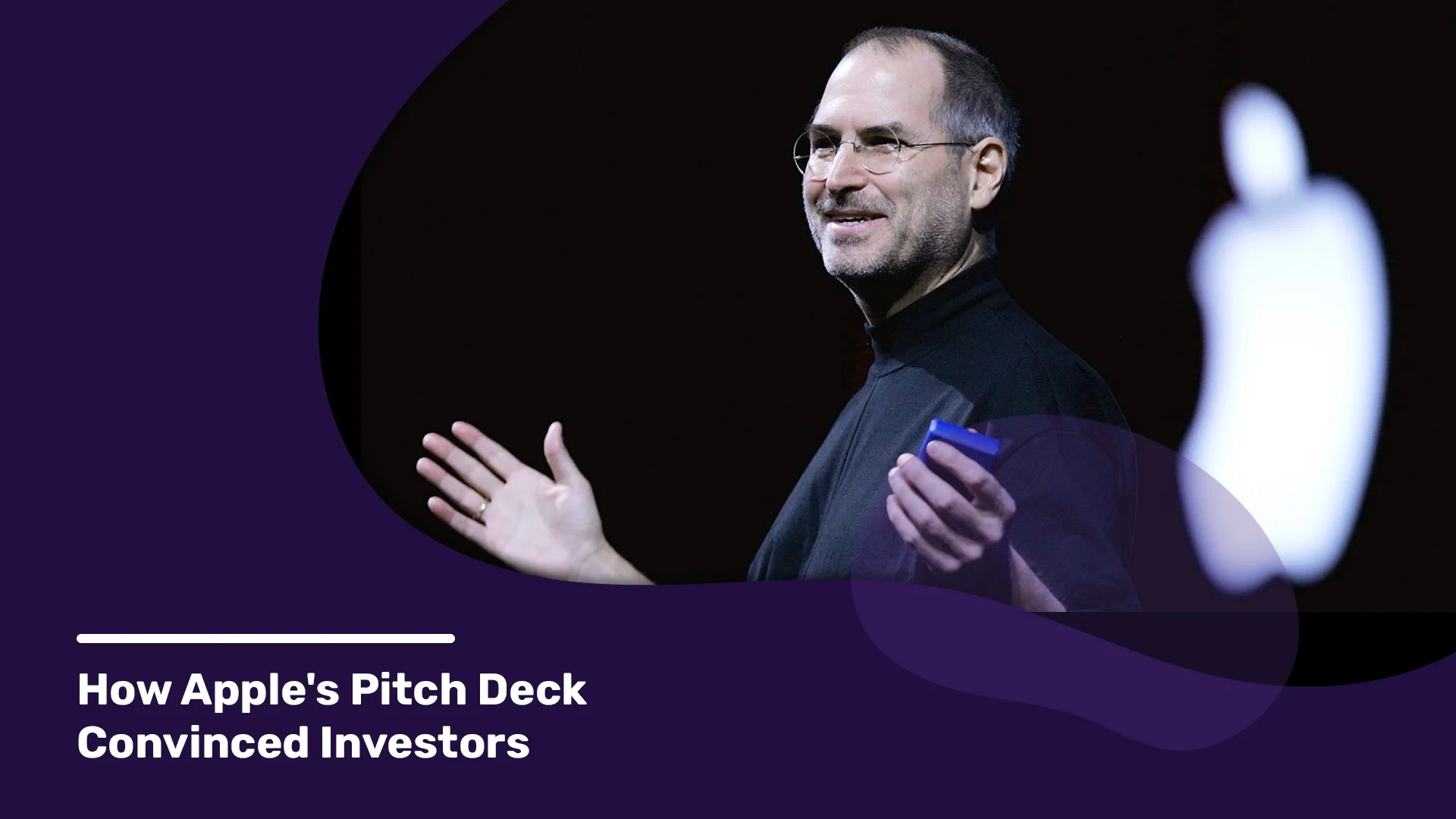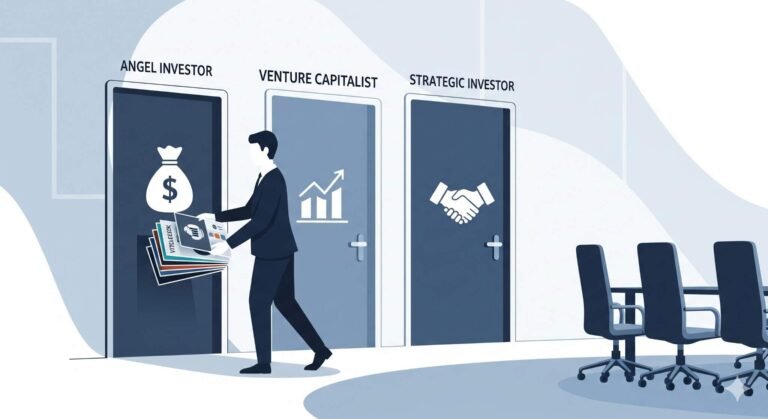Introduction
If one name defines innovation, design excellence, and industry disruption, then it would be Apple Inc. Formed by Steve Jobs and Steve Wozniak in a garage in California, Apple transformed itself into one of the most valuable companies in the world. Yet, like all great companies, Apple needed capital to turn its vision into a reality. The role a pitch deck plays in securing such early investment is a fascinating topic, of particular interest today for many modern entrepreneurs struggling to discover just how they could convince investors to believe in their vision.
Apple’s Interesting Story: Was there ever a pitch deck that sealed the deal for investors? Follow this and more on this blog. Here we’ll walk through what an Apple pitch deck might have contained, how it convinced investors, and what we can learn today as entrepreneurs. Let’s learn how to create a pitch deck that convinces investors as Apple did.
Did Apple Have a Pitch Deck?
Historical Context
By the middle of the 1970s, when Apple sought its initial capital, an overdeveloped pitch deck as we are familiar with today didn’t exist. Startup practices were not very well laid out, and most early-stage firms relied on direct, face-to-face pitches rather than slide elaborations. The two founders of Apple were working at a time when the concept of a personal computer was a novel idea and had investors who would vouch for your cause to be pitched with more than just numbers needed to be shown a vision.
Evidence or Speculation
Although there isn’t any record of how Apple made its formal pitch in the seed funding rounds, many accounts attribute Apple’s finding such investors largely to the direction in which Steve Jobs was able to communicate his vision. For instance, in 1977, what probably convinced venture capitalist Mike Markkula to invest in them was $250,000 when Jobs’ persuasive communication came coupled with the potential that he saw for Apple’s early products. This might have been an effect of Jobs and Wozniak’s pitching. prototypes, simple visuals, and charismatic pitch to communicate the potential of their young company.
What Might Apple’s Pitch Deck Have Included?
If Apple had used the formal pitch deck approach, it would’ve, most probably, concentrated on key elements that made the company’s early products revolutionary. The pitch deck might contain:
- Introduction of Apple I and Apple II: These were the first two products of Apple, and generally speaking, its differentiation in terms of design—it was innovative, user-friendly, and technologically superior to what was on the market before—would have been of significant importance.
- Market Analysis: Jobs and Wozniak would have needed to demonstrate the expanding demand for personal computers, especially by hobbyists, educational institutions, and smaller business concerns, demonstrating a young market still with much potential.
- Business Model: The presentations and pitches would have explained how Apple was going to generate revenue, whether through direct sales or by partnering with retailers, then expanding into new markets.
- Growth Potential: A small start-up with the potential to grow into one of the big giants in the technology sector would be one of the selling points that Apple emphasized because the line of products was assumed to be scalable.
Innovative Appeal
The earliest days of Apple were heavily concentrated on design and user experience, which set it apart from competitors. The pitch would have been centered around how its products were more than just technological marvels but also designed with an eye to the end-user, a mantra that drives the company to this very day. The emphasis placed on innovation with a vision for what these products could do in revolutionizing personal computing would then have remained central to convincing investors that Apple had potential.
How Apple Convinced Investors
Pitching Strategies
Steve Jobs is often remembered for his ability to capture audiences with his presentations. His charisma and passion assured the first investors that there was something special about Steve Jobs. Steve did not sell a product; he sold a dream of tomorrow. The simplest reason for winning the hearts of skeptical investors with such an innovative market must be how he could define a compelling narrative about how personal computers can change the world.
Visionary Products
The Apple I and Apple II were innovative in their simplicity and customer focus. Taking those products to their investor meetings would give them some solid evidence of Apple’s innovative abilities. Unlike many presenters pitching a particular idea, Apple had actual products with which they could then prove their idea-that is, powerful testimony to the potential of this company. That should have played a significant role in convincing investors to invest since it involved actual hands-on interaction with the technology being pitched.
Market Potential
Most likely, Jobs and Wozniak spoke to the potential that their technology would do something to disrupt the market. The message of the computers from Apple was that its systems were democracies of all kinds, very much suited as a tool for hobbyists and small businesses to use their computers. It gave valid reasons why the company should grow. Investors would have been interested in getting in on the ground floor of potentially a gigantic industry led by Apple.
Conclusion
This is why Apple was able to successfully seek early investment: they owned a clear vision, innovative products, and eloquent communication skills. Whether or not an official pitch deck was used, the ground rules for Apple’s early investor pitches do not change with time. Here’s what today’s entrepreneurs take away: speak to your vision with passion; come across with something tangible that will prove your product can have real value; know what your investors want to hear.
By incorporating these lessons into your own pitch strategies, you can do so much better at tapping into today’s investor class and setting up your startup for success. Like Apple, focus on the big picture, communicate compellingly, and always remember that your pitch needs to be firmly based on both innovation and practicality. These are the ingredients by which a small startup can become a global powerhouse.









